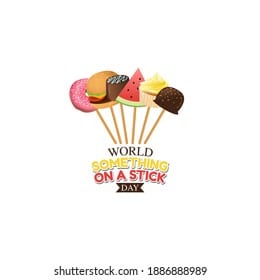January 24 is a “sweet” holiday – International Popsicle Day (International Eskimo Pie Day). The date for its establishment was chosen because it was on this day in 1922 that Christian Nelson, the owner of a candy store in Onawa (Iowa, USA), received a patent for a popsicle.
Eskimo is a creamy ice cream on a stick covered with chocolate glaze. Although its history goes back several millennia (there is an opinion that already in ancient Rome the emperor Nero allowed himself such a cold dessert), it is customary to consider the Eskimo as the birthday. And, of course, popsicle is not just ice cream, it is a symbol of carefree summer days, the taste of childhood, the love for which many have kept for life.
Who and when “invented” the popsicle, who invented to insert a stick into it, where its name came from … Few people know, and there are a huge number of versions and disputes around these historical events. According to one of the most common, the author of this type of ice cream is a certain culinary pastry chef Christian Nelson, who invented to cover a briquette of creamy ice cream with chocolate glaze. And he called it “Eskimo Pie” (Eskimo pie). This happened in 1919, and three years later he received a patent for this “invention”.
The very word “Eskimo”, again according to one version, came from the French, who so called the children’s overalls, similar to the Eskimo costume. Therefore, ice cream, “dressed” in a tight-fitting chocolate “overalls”, by analogy, and received the name popsicle.
It must also be said that this was the first popsicle without a wooden stick – its current unchanged attribute, and it got it only in 1934. Although it is difficult to say what comes first – an popsicle or a stick. Some adhere to the version that the stick is primary in ice cream. And they are based on the fact that a certain Frank Epperson, who once left a glass of lemonade in the cold with a stirring stick, after a while discovered an ice fruit cylinder with a frozen stick, which was very convenient to eat. So, in 1905, he began to prepare frozen lemonades on a stick, and then this idea was picked up by popsicle manufacturers.
Be that as it may, a new type of ice cream was introduced to the world, and by the mid-1930s the eskimo gained fans in many countries and does not lose its immense popularity today.
By the way, the largest number of Eskimo fans is in Russia. It appeared in the Soviet Union back in 1937, as it is believed, on the personal initiative of the People’s Commissar of Food of the USSR, who believed that a Soviet citizen should eat at least 5 kg (!) Of ice cream per year. So, initially produced as a delicacy for amateurs, it changed its status and was classified as “high-calorie and fortified refreshing products that also have therapeutic and dietary properties.” Mikoyan also insisted that ice cream should become a mass food product and be produced at affordable prices.
The production of specifically popsicle was put on industrial rails at first only in Moscow – in 1937, at the Moscow refrigeration plant number 8 (now “Ice-Fili”), the first largest ice cream factory at that time with a capacity of 25 tons per day was put into operation (before that ice cream was produced handicraft method). Then in the capital there was a wide advertising campaign about a new type of ice cream – popsicle. Very quickly, these glazed ice lolly cylinders became a favorite treat for children and adults alike.
Soon, cold storage plants and popsicle production workshops appeared in other Soviet cities. At first, it was made on a manual dosing machine, and only after the Great Patriotic War, in 1947, the first industrial “popsicle generator” of the carousel type appeared (at Moskhladokombinat number 8), which made it possible to significantly increase the volume of popsicle produced.
We must pay tribute to the control over the quality of products, the popsicle was made from high-grade cream – and this is precisely the phenomenon of Soviet ice cream. Any deviation from taste, color or smell was considered a marriage. In addition, the period for selling ice cream was limited to one week, in contrast to modern several months. By the way, Soviet ice cream was loved not only at home, more than 2 thousand tons of the product were exported annually.
Later, the composition and type of popsicle changed, ovals, parallelepipeds and other figures replaced glazed cylinders, ice cream itself began to be made not only from cream, but also from milk, or its derivatives. The composition of the glaze also changed – natural chocolate was replaced by glazes with vegetable fats and dyes. The list of popsicle manufacturers has also expanded. Therefore, today everyone can choose their favorite popsicle from a wide range of food products on the market.
But, regardless of preferences, on International Popsicle Day, all lovers of this delicacy can eat it with a special meaning, thus celebrating this holiday. The main thing to remember is that according to the current GOST, an popsicle can only be on a stick and in glaze, otherwise it is not an popsicle.
By the way, it is not at all necessary to buy this cold delicacy in the store – you can make it at home using simple and healthy products. The recipes are not complicated at all, and are available even for inexperienced cooks.










